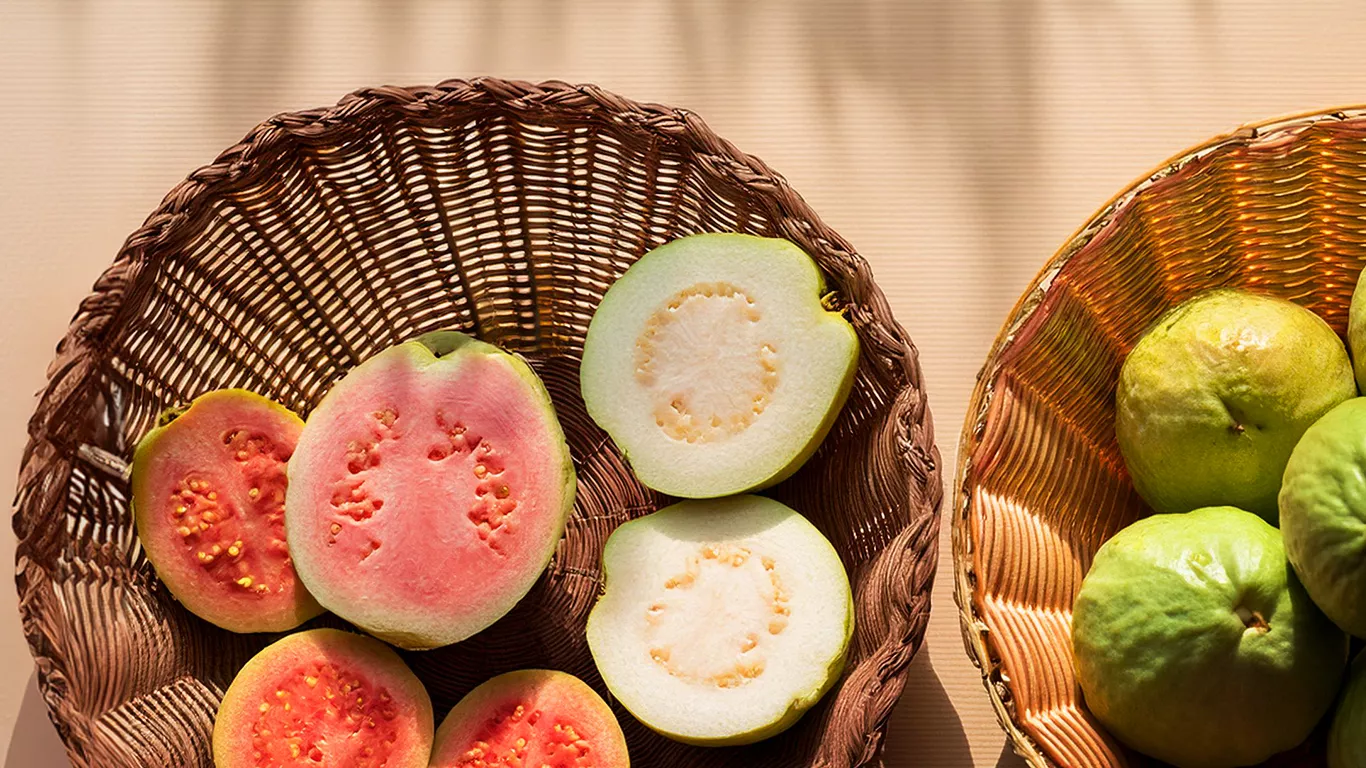Pink Guava Vs White Guava: Know the Differences
More than less, we love all the elements in a fruit basket. That said, one fruit that often has people divided is guava. Don’t get us wrong, the guavas are a glorious tropical delight. This can be witnessed by its strong aroma that accompanies every juicy bite of the fruit. While guavas might all seem similar at first glance, these fruits actually exist in a variety of shades. This selection often has people in a fix as to which to choose. Here we have pink guava vs white guava, pitted against each other to give you a clear glance at the nuances that hide between the same sweet greenish-yellow fruit.
Granted, before slicing into the fruit, most of the guavas may look similar at first. However, once you do, you will be faced with a rich white guava or a white print pink guava fruit. Apart from the obvious colour distinction, each of these fruits has its own distinct flavour profile and mouthfeel texture that makes them a go-to in everything from salads and smoothies to desserts. Whether you’re a fan of biting into a fresh, white guava or simply love pink guava juices, this blog will help you explore them both and hopefully entice you to try the other as well.
Top 5 Differences Between White and Pink Guava
There are some key differences between the guavas; pink vs white:
1. Appearance and Color
As mentioned above, one of the most prominent differentiators between the two are in their appearances. The most common variety of the fruit available is white guava. It is recognised by its creamy, white flesh, which is covered by bright green skin. Pink guavas, on the other hand, have a beautiful pinkish-red tint in contrast to their yellowish-green exterior. Interestingly, this blush of red is brought upon by the presence of lycopene pigment in the fruit. Such a striking appearance makes it a popular pick for commercial red guava juice, which you may easily look for the next time you are at the grocery market.
2. Taste and Flavor Profile
In terms of taste, both guava fruits, white and pink, set themselves apart significantly. White guavas tend to lean towards a mildly, sweet yet tart flavour profile. They have a significant crunch when bitten into, which makes them suitable to be consumed whole like an apple. That said, pink guavas are inherently much sweeter and aromatic. Consuming a ripe, pink guava fruit will give you characteristics similar to a candy with tropical notes. This property makes them a go-to option for desserts and smoothies such as pink guava juice.
3. Nutritional Value Comparison
Beyond their physical and mouthfeel attributes, both guavas are nutritional powerhouses filled with vitamins, dietary fibre and antioxidants. This table will help you distinguish between pink guava (100g) vs white guava (100g) nutritionally:
Nutrients | White Guava | Pink Guava |
Moisture | 83 g | 81 g |
Carbohydrates | 5.1 g | 9.1 g |
Fibre | 8.5 g | 7.3 g |
Ascorbic Acid | 214 mg | 222 mg |
Calcium | 18.5 mg | 14. 2 mg |
4. Uses and Applications
As a fruit, guava has a manifold of uses. For instance, due to its soft texture and honeyed sweetness, fresh pink guava is commonly used in jellies, jams, preserves, candies and juices, such as the B natural pink guava. Whereas, its counterpart is often eaten raw, in salads or in savoury dishes due to its texture and light flavour.
5. Availability and Price
When it comes to availability, white guavas are more accessible in general. They can be seen gracing the grocery shelves throughout, if not most parts of the year. However, the pink ones are a bit more specialised and are seen to be utilised more in the commercial markets. This adds an element of exclusivity to the latter which translates into a higher price point than the white guavas.
So, based on these five categories, which fruit among this pink guava vs white guava takes the cake? The answer can be different for each one of you. Ultimately, it depends on the taste, nutrition, convenience, and utility you need from that fruit. Whether you are craving a tall glass of pink guava juice or an addition to your fruit bowl, simply pick and choose between these two variations to build a diverse and nutritious diet.
To enjoy these benefits in a convenient and delicious form, B Natural Juice provides a high-quality option made from real guava, offering all the health benefits without any added preservatives.
FAQs
a. Which is sweeter, white or pink guava?
Both variations of guavas are sweet to taste. However, ripe, fresh pink guava is generally considered to be sweeter than the other.
b. Can I make red guava juice at home?
Absolutely, you can easily make red guava juice at home using your store-bought pink guavas. All you need to do is wash them thoroughly and blend them into a smooth pulp for a tasty fibrous drink.
-0102?fmt=webp-alpha)





